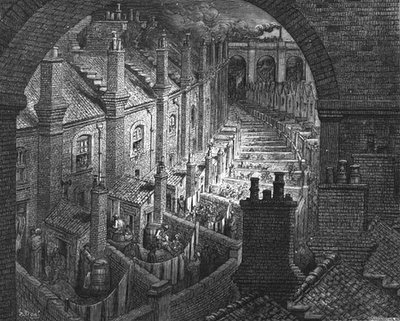
[Image: Keith Robinson/B+C Alexander/New Scientist].
The polar seas are filled with sound: unearthly vibrations that moan almost constantly through near-frozen waters.
"'It's like a string orchestra all practising different tunes at the same time but then suddenly playing together,' says Vera Schlindwein, a geophysicist at the Alfred Wegener Institute for Polar and Marine Research in Bremerhaven, Germany."
If you're hoping to stick your head underwater, however, and listen directly to the arctic seas: think again. "The sounds are not usually audible, but can be heard when recordings of seismic signals... are speeded up."
And they sound like this.

[Image: Photographer unknown; from Shifting Baselines].
So what are the instruments behind this frozen music?
Icebergs, of course.
"A spectacular 16-hour 'song' in July 2000 helped pinpoint the cause," which was "traced to a 400-metre-high iceberg." As the iceberg scraped along the seafloor, "seawater running through crevasses in the ice would have continued to flow rapidly, causing the tunnel walls [to] vibrate." It was a kind of frozen saxophone, pounding into underwater geological formations.
This is the iceberg as cello string (or perhaps kettle drum). The internal crystalline pressures of a half-submerged, mobile landscape soundtracking the arctic seas. Tectonics of ice in surround-sound.

[Image: Gustave Doré, "Over London By Rail" (1872)].
But what if you took note of this and went elsewhere, to London for instance, armed with contact microphones and an iPod? You could listen through headphones to the foundational moaning of old buildings, plugged directly in, the whole city an instrument of arches and railway viaducts, Tube tunnels and old churches, gravitational pressures. The unsettling groan of wet masonry.
Like the creaking timbers of an old ship – or like an iceberg: a landscape under strain, singing all but inaudible music. Except you've got your contact mics, and your headphones on, and the reverbed shudder of a Georgian terrace house lulls you to sleep in a cafe. Arctic music, London-based.
Or perhaps all the bedrock beneath Manhattan, hooked up to contact mics and recorded for three weeks: that recording sped-up to no less than ten minutes then played at high volume through loudspeakers.
This is what your city sounds like, you say: the loose wobble of brickwork and glass. 70 floors of an iron tower humming in the darkness as snow falls.
This is the city, settling in its marshes; this is London, instrument.
(Via Archinect's mapper of the poles, Bryan Finoki).
No comments:
Post a Comment